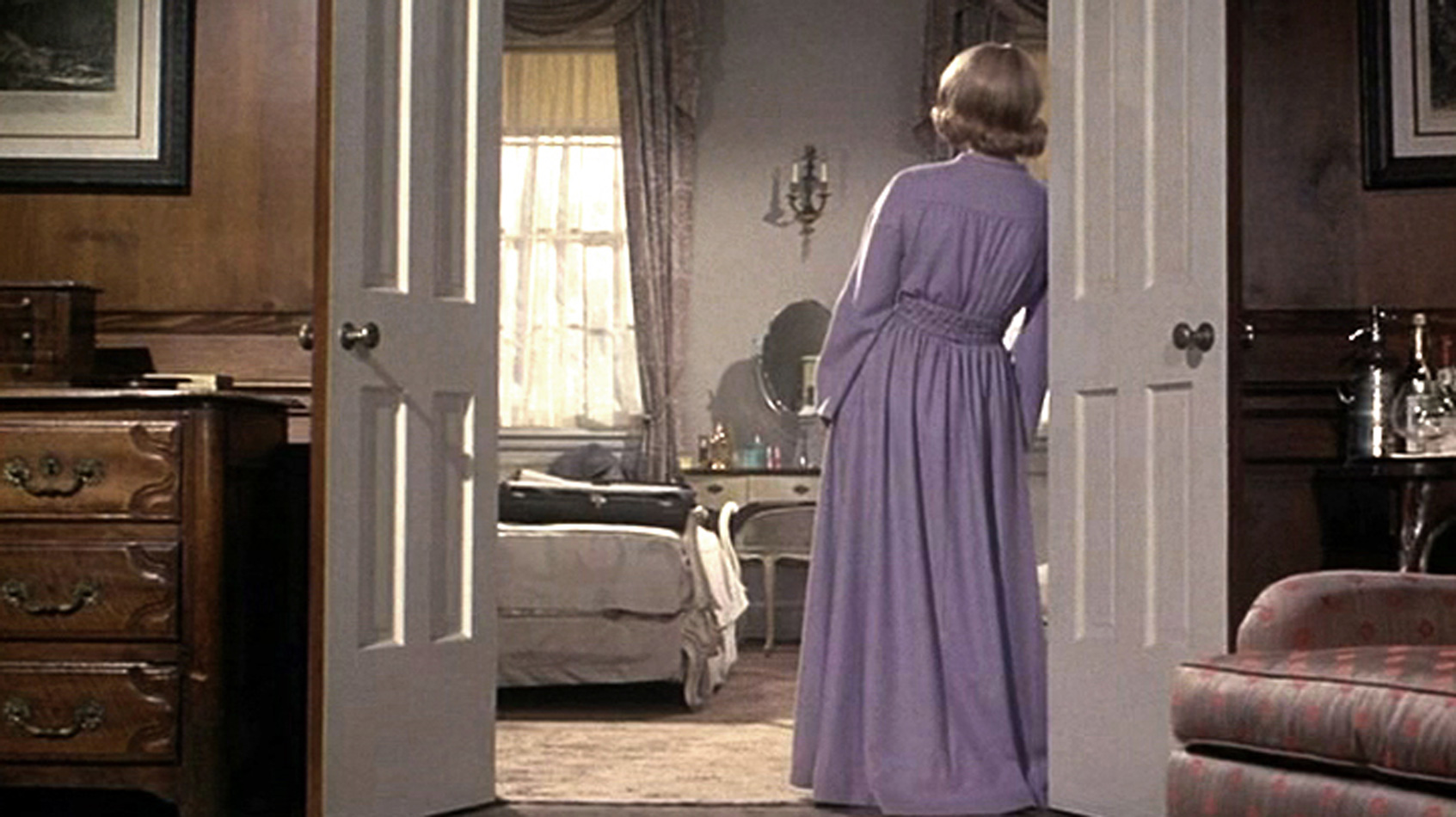Hollywood Movie | Volker Schreiner | 2012 | 07:00 min. |
|
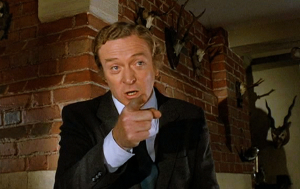 |
A transformation of Nam June Paik's text "film scenario" into a movie. Hollywood stars speak Paik: "You can make any Hollywood movie interesting, if you cut the movie several times ..." Michael Caine, Humphrey Bogart, Elizabeth Taylor, John Torturro, Katharine Hepburn and other protagonists of mainstream cinema are assembled to speak a text about deconstructing film watching. Volker Schreiner video works since 1988/ grants at the Cité Internationale des Arts Paris, the Deutsche Akademie Villa Massimo Rome/ lectureships at the HfG Karlsruhe and the HBK Braunschweig/ visiting professorships at the HBK Braunschweig and the Johannes-Gutenberg-Universitaet Mainz/ lectures, workshops and seminars a.o. in Rome, Istanbul, Casablanca, Jerusalem, Bangkok/ participation in numerous festivals and tours/ works owned a.o. by the NBK Berlin, the ZKM Karlsruhe, the Ludwig Museum Cologne, the Museum fuer Neue Kunst Karlsruhe, the Amsterdam Film Museum/ distribution by Heure Exquise! and Light Cone Paris |
| Shooting Star (Speech) | Bogna Burska | 2011 | 03:54 min. | |
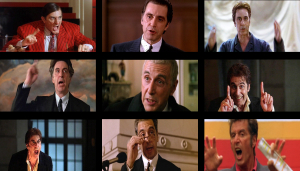 |
Shooting Star speech excerpt 3'53" of 47'25'', found footage video (footage from 37 feature films) 2006/2008, Bogna Burska, in collaboration with Michał Januszaniec. Project was supported by Ministry of Culture and National Heritage of the Republic of Poland. Video compiled of movies starring Al Pacino. It introduces the star actor in almost all his fictional incarnations, but at the same time it is an attempt to create a new integral and coherent story of a man. In co-operation Michal Januszaniec Bogna Burska (born 1974 in Warsaw; lives and works in Gdansk and Sopot). Filmmaker, installation artist, painter and photographer. She graduated from Warsaw Academy of Fine Arts (2001), Phd in the Intermedia Faculty of the Gdańsk Academy of Fine Arts (2009), where she works since 2006. In her found-footage videos (A Game With the Shifting Mirrors series 2006/2008, A Thousand Deaths 2010/2011) she uses sequences from popular films and TV news, that undermine the canons of aestethics and visual schemes, and unveil the mechanisms of contemporary cultural narratives. |
| Confessions with an Open Curtain | Eli Cortiñas | 2011 | 05:25 min. | |
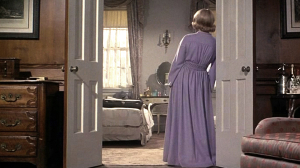 |
The video deals with the construction of female identity, as well as with the portrayal of pictorial details, the interpretation of the specifics of a dramaturgic scene and the relevant film scenography. The curtain, has long been regarded as being at the beginning, an item that veils and conceals. In the baroque and bourgeois theatre of the 18th century it is accorded a particular power, which gives it an active role; not only does it announce the play, it becomes a figure itself, with its folds, movements and shades of colour, ranging from opaque to transparent. In Cortiñas’ work the curtain turns into the central figure with its individual sounds, sweeping size and physical characteristics. In front of it and behind it are blonde women, allowing the viewer only to look over their shoulders. The artist utilizes this motif from Romanticism which permits the female figures to be made anonymous as well as be typified, seeming to merge into one. Eli Cortinas was born en 1976 in Las Palmas de Gran Canaria in Spain. He lives and Works in Cologne in Germany. From 2001 to 2002 he studied at the European Film College in Danemark, then from 2003 to 2008, at the Academy of Media Arts Cologne. He has been granted the Prize for Media Art NRW 2009, Düsseldorf, Germany. He made several movies, including the two channel vidéos "Bird, Cherry, Lover" (2010), and "No Place Like Home" (2006), the experimental movie "2 or 3 Things I knew About Her" (2006), the one channel video "Lovers – all the same in front of G.O.D." (2007, the two channel vidéo "Dial M for Mother” (2008) and the one channel video “FIN” (2009). |
| Double Take | J Tobias Anderson | 2013 | 01:41 min. | |
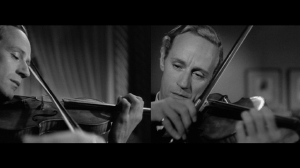 |
"Intermezzo" by Gregory Ratoff (1939). One scene, two different sequences, striking similarities. The two parts are juxtaposed with each other to emphasize this parallelism. Additionally, a new, doubled musical score is also created. Born in 1971 and grew up on Gotland in the Baltic Sea. His education includes the University Collage of Arts Crafts & Design as well as the Royal Collage of Art, both in Stockholm. Working mainly with video and animation Anderson has moved between narrative and non-narrative works and through the years he has created over 40 films. He has also been experimenting with different forms of music and sound installations. Notable exhibitions include P.S.1 Contemporary Art Center in New York, Kunst-Werke Berlin, CaixaForum in Barcelona and Museo de Colecciones ICO in Madrid, as well as solo exhibitions at MMC Luka in Pula, Croatia, ak28 in Stockholm and Uppsala Art Museum in Uppsala, Sweden. |
| Starring Sigmund Freud | John Menick | 2012 | 28:00 min. | |
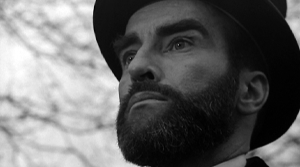 |
Starring Sigmund Freud is a video memento for Sigmund Freud’s little-known film career. Based on an essay John Menick published in Frieze in 2011, the video collects the dozens of appearances that the character of Sigmund Freud has made on small and big screens. After the 1950s, when pill vials replaced analytic couches, the father of psychoanalysis found a second career impersonating himself in everything from a John Huston clunker to a Star Trekepisode. The video suggests that maybe it is in front of the camera, alongside surgically enhanced starlets and CGI chimeras, that “Herr Doktor” will find his final resting place. This video was produced by the Kadist Foundation and commissioned by dOCUMENTA (13). John Menick makes films and audio works, writes essays and short stories, and occasionally makes prints and drawings. These works are often populated by wandering detectives, duplicitous storytellers, homeless documentarians, mad travelers, and institutionalized cinephiles. His artwork has been shown at dOCUMENTA (13), Kassel; MoMA PS1, New York; Palais de Tokyo, Paris; CCA Wattis, San Francisco; Midway Contemporary Art, Minneapolis; and Artists Space, New York. His writing has appeared in Frieze, Mousse, and Art in America. Menick has received grants from the Jerome Foundation and the New York Foundation for the Arts, and he is a visiting professor of film and video at the Cooper Union in New York. His ideal audience member — possibly you — watches no television, can’t drive or swim, always carries a pen, hates cell phones, names Pale Fire as his or her favorite book, wears glasses, and is afraid of flying. Most of the time he lives in New York City. |
| Stardust | Nicolas Provost | 2010 | 20:00 min. | |
 |
Stardust is the second part of the trilogy where Provost investigates the boundaries of fiction and reality by filming everyday life with a hidden high resolution camera and editing the cinematic images into a fiction film by using cinematographic and narrative codes from the Hollywood film language.The award winning Plot Point (2007) that turned everyday life around Times Square into a thriller film being the first part of the trilogy, this time Provost takes his hidden camera to Las Vegas in Stardust and films real Hollywood stars - Jon Voight, Dennis Hopper and Jack Nicholson and turns the glorious and ambiguous power of the gambling capital into an exciting crime story. Nicolas Provost’s work reflects on the grammar of cinema, the human condition in our collective film memory and the relation between visual art and the cinematic experience. His films provoke both recognition and alienation and succeed in catching our expectations into an unravelling game of mystery and abstraction. With manipulations of time, codes and form, cinematographic and narrative language are sculpted into new stories. In 2003 Nicolas Provost (born in Ronse, Belgium) moved back to Belgium after a 10 years stay in Norway. He now lives and works in New York. Solo exhibitions include The Seattle Art Museum, Musée d’art moderne et contemporain, Strasbourg, France, Muziekgebouw Amsterdam, Tim Van Laere Gallery, Antwerp and Haunch of Venison London and Berlin. His work has been acquired by major museums including the Birmingham Museum, SMAK Gent and the Royal Museum of Fine Arts Belgium. His work has earned a long list of awards and screenings at prestigious festivals including The Sundance Film Festival, The Venice Film Festival, The Berlinale, The San Sebastian Film Festival and The Locarno Film Festival. His critically acclaimed first feature film ‘The Invader’ had it’s world premiere in competition at the Venice Film Festival 2011. |
| Quality 2 | Fertillet Baptiste | 2013 | 02:43 min. | |
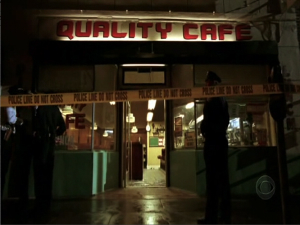 |
Into both the same place and space, various filmic shots intertwine through different combinations. Characters, stories, styles and properties intersect. Borders between things become porous into this place but we don't realize we have visited it many times. Baptiste Fertillet is a French artist born in 1988 and living in Nantes. He studied at EESI (European School for Images) Angouleme (France) and participated various master-classes and workshops by artists in France, Lebanon and Germany. His video works are developing questions about cinema through deconstruction, substraction, cutups and mashups operations. By playing with our memory and perception, this work opens new approaches of the cinematographic culture and it's an attempt to propel next modifications of cinema. Recent exhibitions & projects : 'Shady Grove' with Neal Beggs ; '4, avenue de la Calypso', art collective (with Apolline Schöser & Lucie Desaubliaux) ; 'Réel – Mon beau souci', Paris ; 'C'est incroyable comme on grandit', Frac Poitou-Charente (France). URLs: http://baptistefertillet.wordpress.com/ , http://avenuecalypso.wordpress.com/ |
| Crop Duster Octet | Gregg Biermann | 2011 | 05:32 min. | |
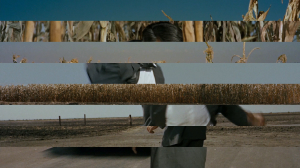 |
In Crop Duster Octet,the iconic “crop duster”sequence from Hitchcock’s North by Northwest in which Cary Grant is repeatedly attacked by a small airplane swooping from the sky is deconstructed into eight horizontal bands, each of which is slightly out of synch with the next. As the scene (and, in particular, Grant’s body) is continuously deconstructed, the patterns of action are refigured and intensified, culminating in a crescendo of convergence. -- Jaimie Baron, Los Angeles Filmforum Gregg Biermann is a video and multimedia artist whose work comes out of the avant-garde filmmaking tradition. His work takes advantage of digital technologies to advance rigorous compositional strategies. |
| Disastrous Dialogue | Soren Thilo Funder | 2011 | 10:00 min. | |
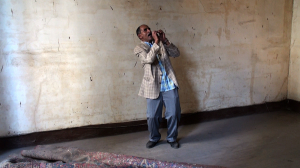 |
Appropriating dialogue from three major catastrophe movies, all written and directed by the German Director Roland Emmerich, Disastrous Dialogue sets out to challenge the mainstream viewpoint of disaster strategies. The script is translated into Arabic and performed by Egyptian actors, transforming the script through the voice of Hollywood cinema’s unrepresented. The film was shot immediately before the Egyptian Revolution and is dedicated to the memory of actress Sally Zahran who was killed during the demonstrations. Soren Thilo Funder (b. 1979, Denmark) lives and works in Copenhagen, Denmark. Funder graduated from the Royal Danish Academy of Fine Arts in 2008 and studied at The School of Art and Architecture, University of Illinois, Chicago in 2006. Exhibitions include Copenhagen Art Festival, eva International Biennial of Visual Art, Denmark, 12th Istanbul Biennial, VII Shiryaevo Biennale of Contemporary Art, 2nd International Moscow Biennial for Young Art, Manifesta 8 – Parallel Events and 6th International Liverpool Biennial. Residencies include Museum of Contemporary Art Zagreb Residency Program in Zagreb, SOMA in Mexico City, Townhouse Gallery in Cairo, Frankfurter Kunstverein in Frankfurt am Main and Platform Garanti Contemporary Art Center in Istanbul. |
